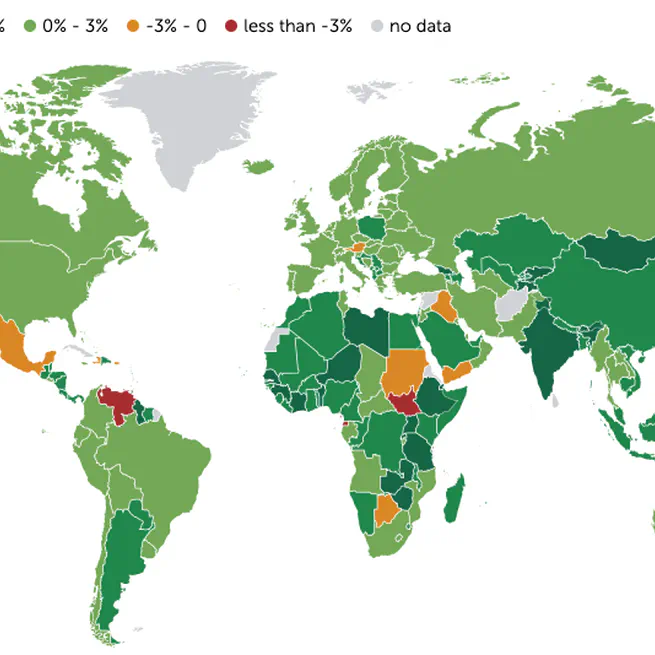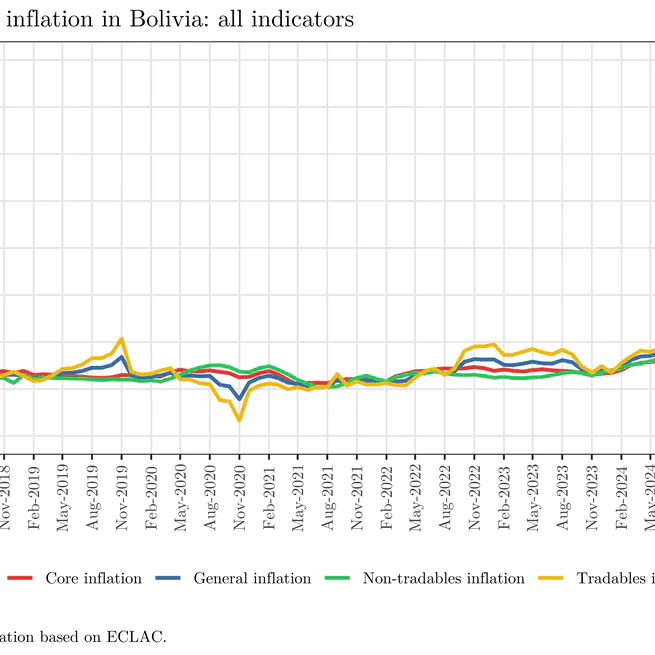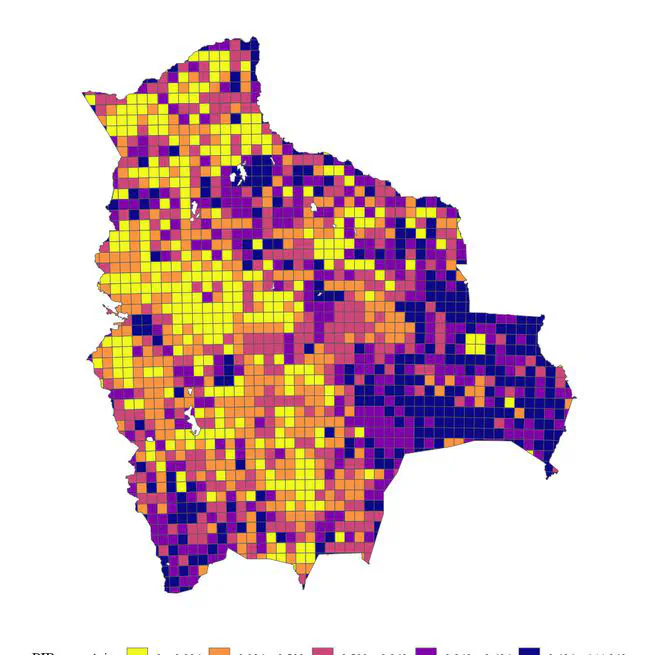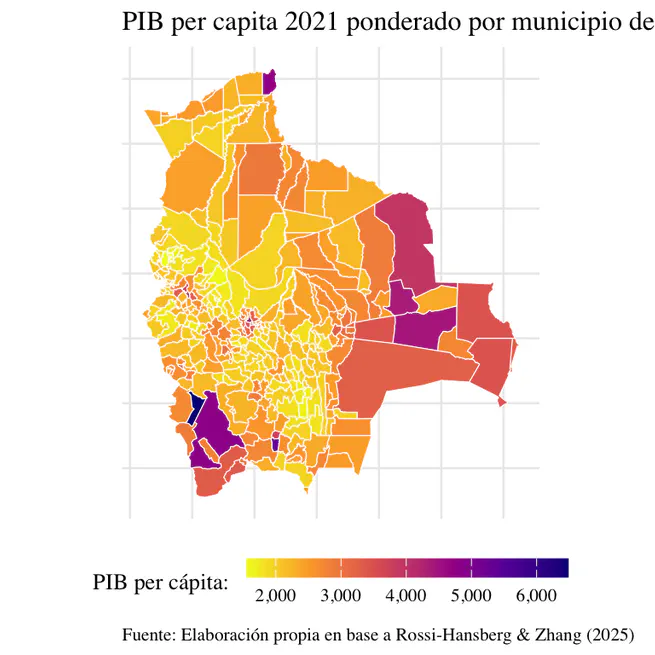
This article shows how to extract economic data from the IMF using its DataMapper API, with `R` functions to organize and analyze information on indicators and countries. Applications are illustrated with Bolivia and Spain, demonstrating how to access structured data such as GDP growth, unemployment, inflation, fiscal balance, and public debt.
Sep 29, 2025

This article explores data extraction from ECLAC and its application to the analysis of inflation in Bolivia, using the R programming language to access relevant economic data. As of August 2025, Bolivia’s year-on-year inflation ranges from 16.05% (non-tradable goods) to 30.43% (tradable goods).
Sep 20, 2025

In this post, I evaluate the quality of the new granular GDP estimates by Rossi-Hansberg & Zhang (2025), comparing them with official data from the Bolivian National Statistics Institute (INE). At the national level, the differences are below 1%, and although there are larger gaps at the departmental level—particularly in cases like Cochabamba or Santa Cruz—the estimates have improved over time. The results are promising for subnational research in Bolivia.
Apr 7, 2025

Researchers Rossi-Hansberg & Zhang (2025) from the Becker Friedman Institute have estimated GDP and per capita income at the subnational level worldwide from 2012 to 2021 using machine learning techniques and high-resolution data. This tool represents a key advancement for developing countries like Bolivia, where lack of data hampers policy evaluation. Applying this data at the municipal level reveals important patterns in income distribution, especially in border and urban regions. These estimates open the door to more precise research and better-informed public policy decisions.
Apr 2, 2025